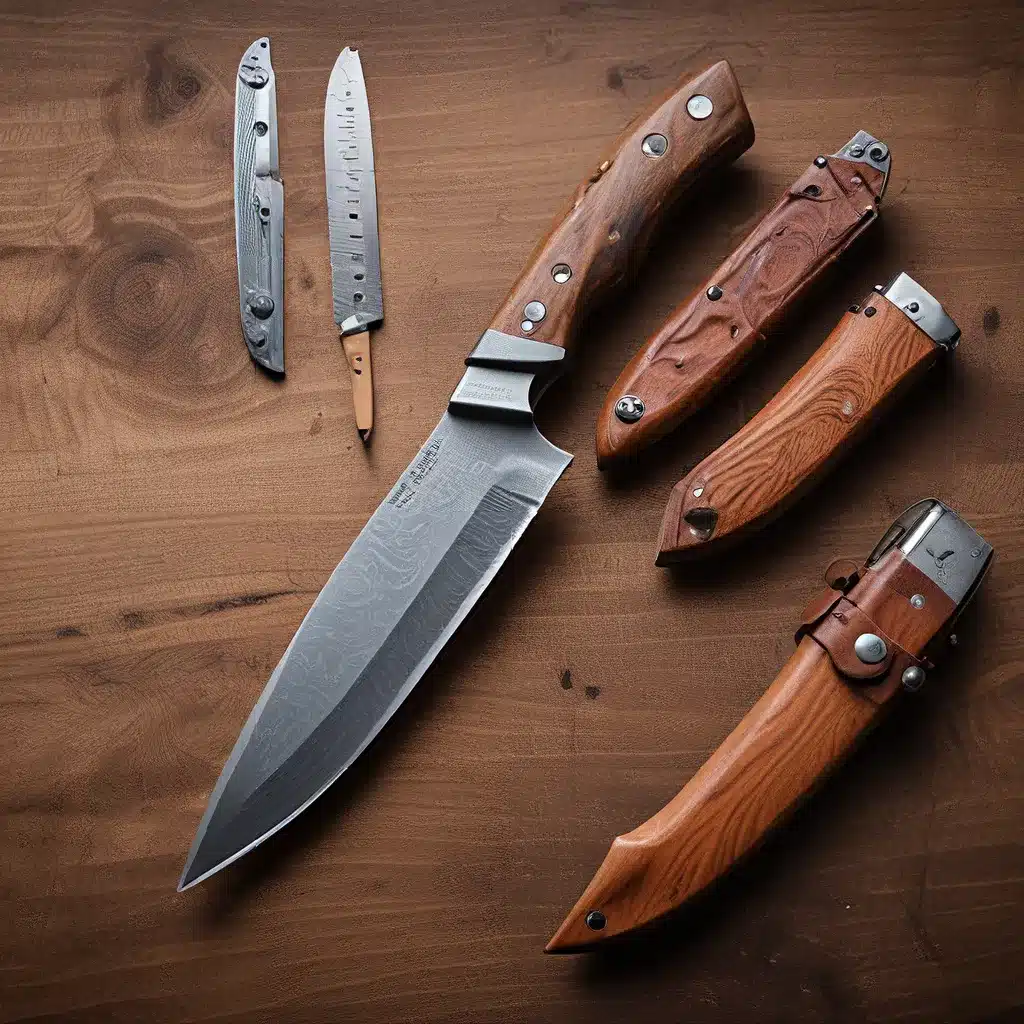
Ah, knives – the unsung heroes of our everyday lives. From slicing through juicy tomatoes to meticulously carving intricate pieces of wood, these humble tools have captured my fascination for years. But little did I know that the story behind their evolution is nothing short of remarkable.
The Gateway Drug: S30V
My journey into the world of knife steel began, like many others, with the now-iconic S30V. This steel, developed by Crucible and released in the early 2000s, was hailed as a game-changer. As I dove deeper into the world of knives, I couldn’t help but wonder – what made this steel so special, and what goes into the development of a new knife steel?
Knife Steel Nerds became my go-to resource, and I found myself captivated by the insights shared by the team. I peppered them with questions at every knife show, eager to understand the nuances of steel composition, heat treatment, and the delicate balancing act required to create the perfect blade.
Epiphanies and Revelations
As my understanding grew, I started to have a series of epiphanies about the possibilities in steel design that had yet to be explored. The key, it seemed, lay in the careful manipulation of the microstructure – specifically, the size and distribution of the carbides within the steel.
The traditional approach to stainless steels had focused on high chromium content, which led to the formation of large, coarse chromium carbides. These carbides, while providing wear resistance, significantly reduced the toughness of the steel. In contrast, the non-stainless powder metallurgy steels, like CPM-4V and Vanadis 8, had smaller vanadium carbides that offered superior toughness and wear resistance.
The question then became: could a stainless steel be developed with a similar microstructure, combining the best of both worlds?
Designing a New Masterpiece
With this idea in mind, I set out to create a steel that would push the boundaries of what was possible. I knew that reducing the chromium content would be key, but that also meant addressing the resulting loss in corrosion resistance. After countless simulations and experiments, I found the sweet spot – a steel with just enough chromium to maintain excellent stainless properties, but with the addition of niobium and nitrogen to create a microstructure of fine, hard carbides.
The CPM-MagnaCut was born.
Herman Knives is proud to be one of the first to offer this revolutionary steel in their custom knives. But the journey to this point was anything but smooth sailing.
Sleepless Nights and Melt Mishaps
As I waited for the first melt of steel to be atomized into powder, I found myself waking up at 3 a.m., anxious about the precise composition. Should I tweak the carbon content? Adjust the silicon? The uncertainty was palpable, and I couldn’t help but second-guess every decision.
When the day finally arrived, there was a moment of panic. The melt had partially solidified, and Bob Skibitski, the lead metallurgist at Crucible, asked if he could add more carbon to reduce the melting temperature. I held my ground, insisting that we wait until the remaining elements were added, and thankfully, the melt was stabilized, and the production proceeded without further incident.
Naming the Masterpiece
Choosing a name for this new steel was a task in itself. I wanted something that would evoke the history of steel development, a nod to the pioneers who had paved the way. Inspiration struck when I remembered the Vanadium Alloys Steel Company (VASCO), a major contributor to the industry, and their tradition of naming steels with “cut” in the title.
CPM-MagnaCut it was – a combination of the Crucible Particle Metallurgy process, the Latin word “magna” meaning “great,” and the VASCO tradition. A name that would do justice to the hard work and dedication that went into its creation.
Testing the Limits
With the steel now in production, it was time to put it to the test. I enlisted the help of skilled knifemakers, including Phil Wilson, Shawn Houston, Devin Thomas, Darrin Thomas, Big Chris, Matthew Gregory, and Andrew Demko, to put the steel through its paces.
The results were nothing short of impressive. The microstructure of CPM-MagnaCut proved to be finer than even the renowned CPM-4V and Vanadis 4 Extra, with a unique blend of vanadium and niobium carbides. This contributed to exceptional toughness, edge retention, and corrosion resistance, all while maintaining high hardness levels.
Balancing the Scales
One of the key challenges in steel design is striking the right balance between various properties. Higher edge retention typically comes at the cost of reduced toughness, while greater hardness can compromise corrosion resistance. But CPM-MagnaCut seemed to defy these tradeoffs.
The elimination of chromium carbides was the secret sauce. By reducing the chromium content, I was able to achieve a stainless steel with hardness levels as high as 64 Rc, all while maintaining excellent corrosion resistance – surpassing even the performance of steels like S110V and S45VN.
A Tougher, Sharper Future
As I reflect on the journey that led to the creation of CPM-MagnaCut, I’m struck by the sheer amount of dedication, experimentation, and problem-solving that went into it. But the true reward lies in witnessing the steel’s performance in the hands of skilled knifemakers and enthusiasts.
From delicate kitchen knives to rugged outdoor tools, CPM-MagnaCut has proven its mettle, offering a unique blend of toughness, edge retention, and corrosion resistance that sets a new standard in the industry. And who knows what other innovations may be on the horizon as we continue to push the boundaries of what’s possible in knife steel design?
One thing is certain: the story of CPM-MagnaCut is just the beginning of a remarkable journey, one that promises to sharpen our understanding of the art and science behind the blades that shape our world.


